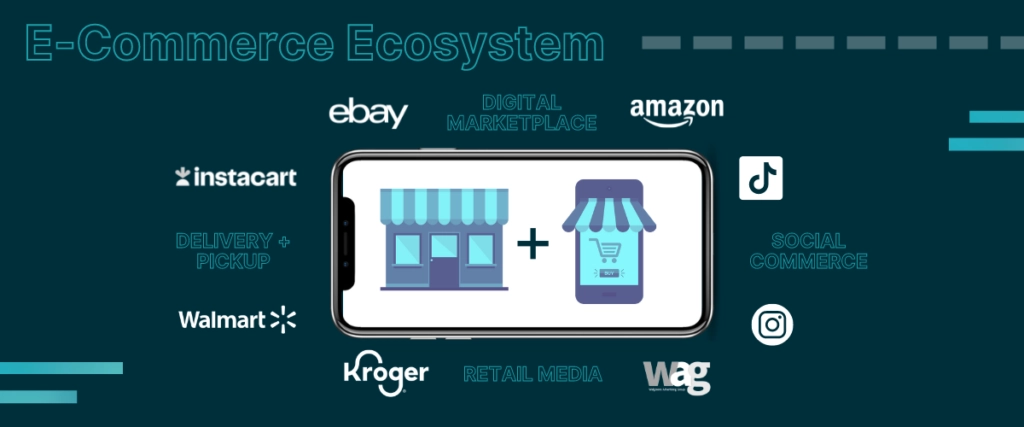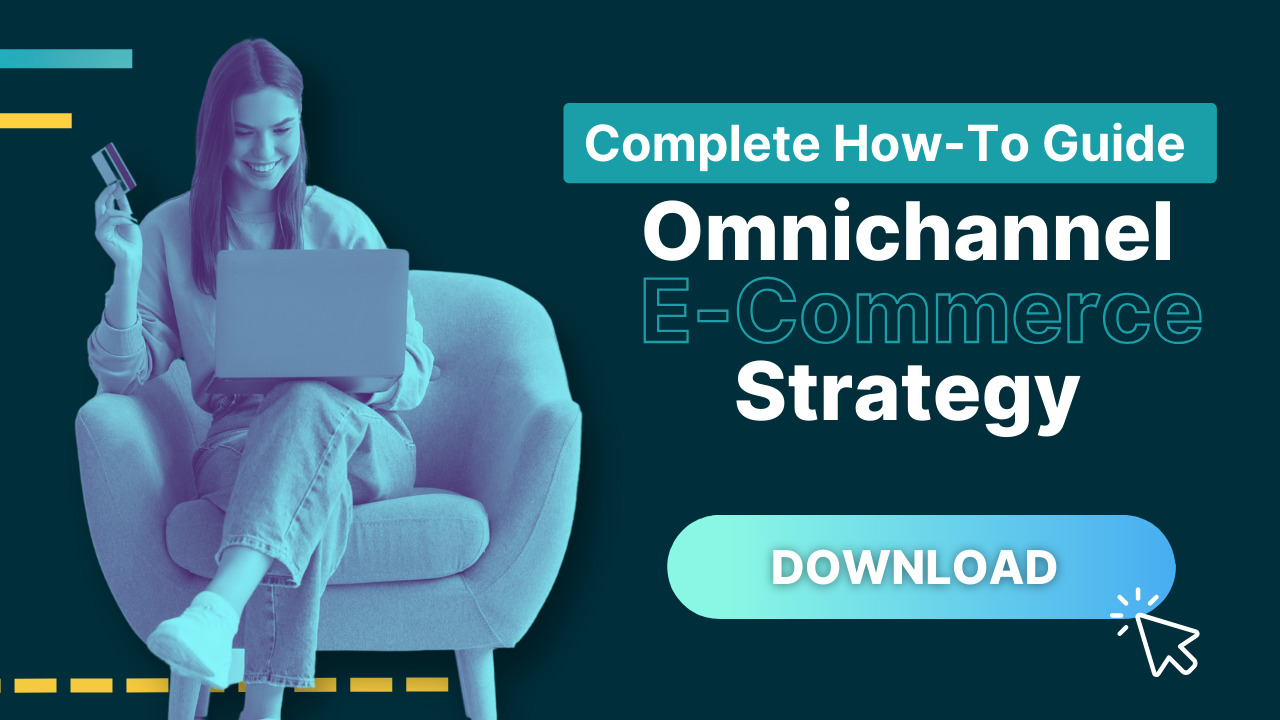Create Your Ideal Omnichannel eCommerce Strategy
A successful ecommerce strategy requires an omnichannel presence. It is the new norm for shopping and will continue its upward trajectory. Brands are following suit, investing more than ever in ecommerce advertising.
What does this mean for ecommerce marketers?
To build consumer relationships and establish brand loyalty, marketers must create a robust online presence that aligns with where their consumers are spending time online. It is critical to show up in multiple digital marketplaces, for product discovery as well as purchase.
Today’s ecommerce model expands beyond traditional commerce channels. Brands can’t rely on just having a Shopify or Amazon storefront anymore. You can place your product in front of engaged users on social media through social commerce, influencer marketing, social search, and many other paid advertising placements. However, even social is just one piece of the puzzle.
To learn how to craft the optimal omnichannel ecommerce strategy for your brand, download the guide below:
Creating an eCommerce Ecosystem
The digital world is far more crowded than any physical retail destination. eCommerce is multi-channel, bridging the gap between in-store and online experiences. Over 73% of consumers use multiple channels to make purchasing decisions. And because shoppers are multichannel, brands must be too.

The eCommerce Ecosystem
eCommerce Statistics
-
- Retail media is the 3rd largest digital ad channel in the US.
-
- M-commerce accounts for 9% of total retail sales.
-
- D2C commerce sales will surpass $212B by 2024.
-
- 50% of Gen Z & Millennials make social commerce purchases.
-
- 97.9% of US digital shoppers browsed products on mobile in 2022.
Understanding the eCommerce Consumer Perspective
The modern consumer is their own salesperson. They are better informed, armed with reviews, and company and product information. In fact, 97% of consumers check online reviews before buying a product to get additional insight.
What are today’s consumers looking for from ecommerce brands?
eCommerce has skyrocketed in popularity. As this medium grows, consumer expectations and shopping behaviors are also changing.
-
- Greater flexibility from payment plans to product availability
-
- More personalized ad targeting and curated content
-
- Convenient and quick delivery options
-
- Continuously cultivated brand relationships
Customer experience is the ultimate differentiator. Consumers seek quality experiences, with 36% rating experience as critical for them, just behind price and convenience. Positive, personalized brand experiences are what ultimately drive conversions.
Build Your Connected eCommerce Strategy
eCommerce is social commerce, marketplaces, delivery providers, D2C, retail media, and more – all wrapped into one connected commerce experience. Skai coined the term “connected commerce”, which simply refers to connecting all points of the customer commerce journey together. It’s important to also connect all digital media tactics with commerce channels to ensure they are synchronously supporting the customer journey to drive optimal return on investment.
Key Takeaways for Successful eCommerce Marketing:
You can achieve ecommerce success using three key components:
-
- Messaging that resonates with and engages target audiences
-
- A multichannel e-commerce experience with numerous retail touchpoints
-
- Full-funnel marketing for each stage of the consumer journey
Coegi can help set up a data-driven strategy to maximize your ecommerce success. Contact us today to learn more.





